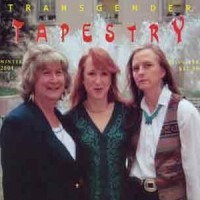Preserving Our History (2001)

©2001, 2013 by Dallas Denny
Source: Denny, Dallas. (2001, Winter). Editorial: Preserving our history. Transgender Tapestry, 96, p. 6.
Preserving our History
By Dallas Denny
Ten years ago I came to realize that as a community we had little sense of our history. There seemed to be no libraries, archives, or repositories for transgender materials, and few of our national organizations maintained archival copies of their own materials. A few organizations, most notably Tri-Ess, had been wise enough to donate archival materials to universities and archives, but for the most part, our history was being discarded and destroyed on a daily basis.
Because of this void, I founded the National Transgender Library & Archive in 1992, establishing it as a division of AEGIS, a nonprofit organization I had founded. I seeded the NTL&A with my private collection, which had grown large, and the NTL&A began to actively acquire materials. By 1993, the NTL&A filled two large bedrooms in the house in which I lived.
I appealed to the transgender community, asking for support for the NTL&A, which, since it had been donated to a nonprofit, was no longer a private collection, but had become a community asset. To their credit, a dozen or people sent the $25 I requested, but only one sent more than that, and most contributed only once. I also asked for stewards for the collection, but no one stepped forward.
In the Fall of 1998, I moved from the five bedroom house I had been using as headquarters for AEGIS into a home of my own, a cottage with no room for the NTL&A. Because AEGIS had began its evolution into the present-day Gender Education & Advocacy and was in an inactive phase, there were no facilities or money to procure space for the collection. Being broke myself after my recent venture into the wonderful world of real estate, I appealed to the Atlanta community, which responded wonderfully. Katherine and Erlene McDowell were kind enough to offer free storage space, and on moving day Andrea Bennett showed up with her son and one of his friends in a rented truck. With the help of other volunteers we boxed the collection and moved it to its new home, which would keep the materials dry and secure, but, alas, inaccessible in cardboard boxes.
Gender Education & Advocacy launched on 1 January, 2000. Our first task was to determine what to do with the NTL&A materials. With regret, we came to the decision that we did not have the resources to house it. We made a decision to award the NTL&A to another not-for-profit organization, hopefully one which would recognize the importance of the material and would have the infrastructure necessary to house it in perpetuity. We drew up and distributed a request for proposals, asking to hear from interested parties.
We received 15 proposals, all from reputable universities or nonprofit agencies. All were impressive, most mightily so; we knew we were faced with a difficult decision, for any of the 15 would have been worthy of receiving the collection.
The GEA board set about evaluating and ranking the proposals according to a set of objective criteria which had been outlined in the RFP. In a lengthy telephone conference, the board discussed the objective rankings and each board members spoke of his or her subjective feelings. The board felt it was important to keep the collection in transgender hands, but was also concerned about the financial security and potential for long-term survival of the recipient.
The decision was a difficult one, based upon both objective and subjective criteria, and not made lightly. The NTL&A would be awarded to the Labadie Collection of the University of Michigan Library System. We would request of the Labadie Collection that it send any duplicate items to the GLBT Historical Association of Northern California.
Some things that weighted in the Labadie’s favor was its history of collecting unpopular social movements like Anarchy, the fact that there was an extant physical plant for the housing of the NTL&A collection, and the Midwestern location. There were many other consideration as well.
Let me assure you: evaluating 15 wonderful applications on the basis of dozens of criteria is neither an easy nor a happy task. But the GEA board did it, and did it well, making a decision it felt was in the best interest of the collection and of the community, and refusing to be swayed by offers to purchase the collection.
In September 2000 the NTL&A was physically transported to Ann Arbor and the laborious process of unpacking, sorting, labeling, and cataloguing the collection was begun.
In July 2001 I flew to Ann Arbor to visit the collection. The many books were on the stacks and in the university library computer system; to my amazement, a search of the words National Transgender Library Archive brought up more than 800 books. Periodicals had been processed by the Labadie Collection and were in a queue to be entered in the university computer system and so were not up, but the Labadie’s web page featured a temporary list of NTL&T periodical titles and issues. Julie Harrada, the Director of the Labadie, showed me and another GEA board member a long shelf of correspondence and archival materials which had been sorted but had not yet been catalogued.
The progress made by the Labadie in a short period of time, the Labadie’s sensitivity to issues of privacy in personal correspondence, and the Labadie’s sincere appreciation of the NTL&A materials have convinced me the board of GEA made a wise decision—one which benefits the entire transgender community.
For information on the NTL&A, contact Julie Harrada, Curator, Labadie Collection, Special Collection Library, 711 Hatcher Library South, University of Michigan, Ann Arbor, MI 48109-1205; 734-764-9377 VOICE; 734-764-9368 FAX; jharrada@umich.edu E-MAIL.
